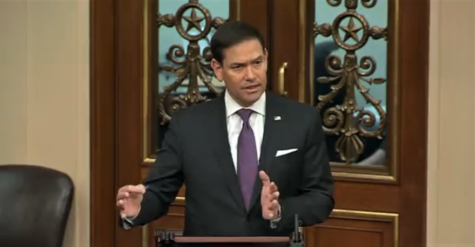Permanent Daylight Saving Time
New bill introduced could remove Daylight Saving Time permanently
March 18, 2022
Mar. and Oct., two months known for holidays are also known for Daylight Saving Time (DST). However, that may not be the case anymore, as the “Sunshine Protection Act” was passed by the U.S. Senate chamber unanimously on Mar. 15. Introduced by Florida Senator Marco Rubio (R), the bill would remove “falling back,” which is when in Oct. the clock is set one hour back.
“Just this past weekend, we all went through that biannual ritual of changing the clock back and forth and the disruption that comes with it… we don’t have to keep doing this stupidity anymore,” Rubio said on the Senate floor.

Rubio had attempted to get the same bill passed in 2018, but was rejected because the U.S. Congress never responded to the bill. At the time, 14 other states had joined Florida for removing DST, such as Georgia, Washington, Utah, Maine and others.
DST had begun in World War I by Germany, who had planned for it to help conserve energy for vehicles. Countries in the Allied Powers, such as France, the U.K. and later the U.S. had joined in. However, it became official in 1966, with DST being known as the Uniform Time Act, which had the time changes occur in the last weeks of Apr. and Nov. Even with the act passed, it was not observed everywhere in America, but legislators had a plan for that. In 1973, the Emergency Daylight Savings Time Conservation Act was passed, which caused DST to be observed yearly. It also set the specific times as to when to set the clock forward or backward and changed from months of the switch from Apr. and Nov. to Mar. and Nov. respectively. President Richard Nixon gave his full approval, citing an energy crisis as his reasoning. Ever since then, DST has stuck in most states throughout America.
The Sunshine Protection Act is headed for the U.S. House of Representatives next, all the while it’s being backed by Republicans and Democrats alike. If the House passes it, then the bill is sent to President Biden, who will sign to approve or veto it.
“…this would give us a chance for Americans all across the country to be rid of fall back and make Daylight Savings Time permanent and to add a little sunlight into most people’s lives,” Rhode Island Senator Sheldon Whitehouse (D) said before the bill passed.
















